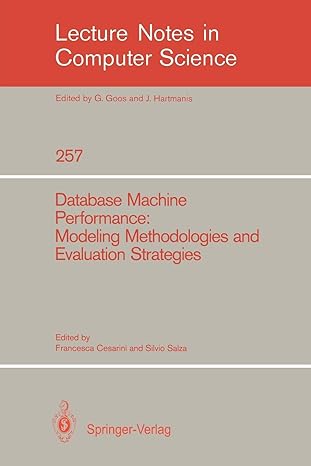Question
1. What is the first version of Microsoft Windows with peer-to-peer networking support for the PC? (a) Windows 3.11 (b) MS-DOS (c) Windows NT (d)
1. What is the first version of Microsoft Windows with peer-to-peer networking support for the PC?
(a) Windows 3.11
(b) MS-DOS
(c) Windows NT
(d) Windows 95
2. Why a computer need a BIOS?
(a) Initiates and enables communications with operating system.
(b) Performs the Post-on Self-Test (POST).
(c) Conducts basic hardware and software communications outside the computer
(d) Starts a communication with application system that interfaces with the user
3. Why a CPU needs cache memory?
(a) Internal clock of a CPU is faster than the external clock of the CPU.
(b) External clock of a CPU is faster than the internal clock of the CPU.
(c) Have to wait on information to arrive from other CPUs.
(d) Most modern CPUs have cache memory built into the chip.
4. Below are the file systems used by Windows except:
(a) FAT16
(b) FAT23
(c) FAT64
(d) NTFS
5. There are _______ varieties of operating system installations.
(a) two
(b) three
(c) four
(d) five
6. Clean installation is likely on a computer that____
(a) has no Windows or Linux operating system.
(b) has a Windows operating system that will be overwritten by the Linux installation.
(c) has no system at all.
(d) has an operating system but cannot be overwritten.
7. Which of the following is true about "Preparing for Installation" stage?
(a) Ensuring that all equipment is powered on and not operating correctly.
(b) Having up to date and accurate information available about yourself.
(c) Having a manual for any device drivers that might be needed for new equipment.
(d) Knowing some basic features of the OS you want to install.
8. Which of the following is not an action after the OS installation
(a) Keep the product key
(b) Keep the activation number in a safe place
(c) Check for OS updates
(d) Download the software updates.
9. Consider a disk queue with requests for I/O to blocks on cylinders.
98, 183, 37, 122, 14, 124, 65, 67 and the disk head initially at 53.
Considering First Come First Serve (FCFS) disk scheduling, the total number of
head movements is:
(a) 620
(b) 640
(c) 660
(d) 700
10. Consider a disk queue with requests for I/O to blocks on cylinders.
98, 183, 37, 122, 14, 124, 65, 67 and the disk head initially at 53.
Considering Shortest Seek Time First (SSTF) disk scheduling, the total number of
head movements is:
(a) 224
(b) 245
(c) 240
(d) 236
Step by Step Solution
There are 3 Steps involved in it
Step: 1

Get Instant Access to Expert-Tailored Solutions
See step-by-step solutions with expert insights and AI powered tools for academic success
Step: 2

Step: 3

Ace Your Homework with AI
Get the answers you need in no time with our AI-driven, step-by-step assistance
Get Started


